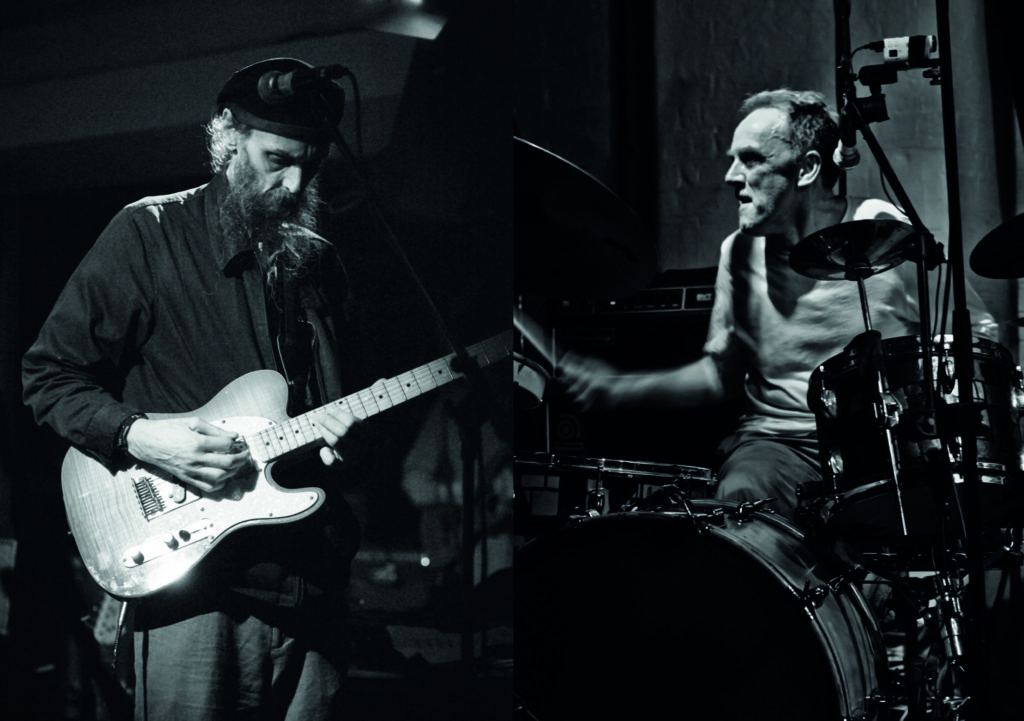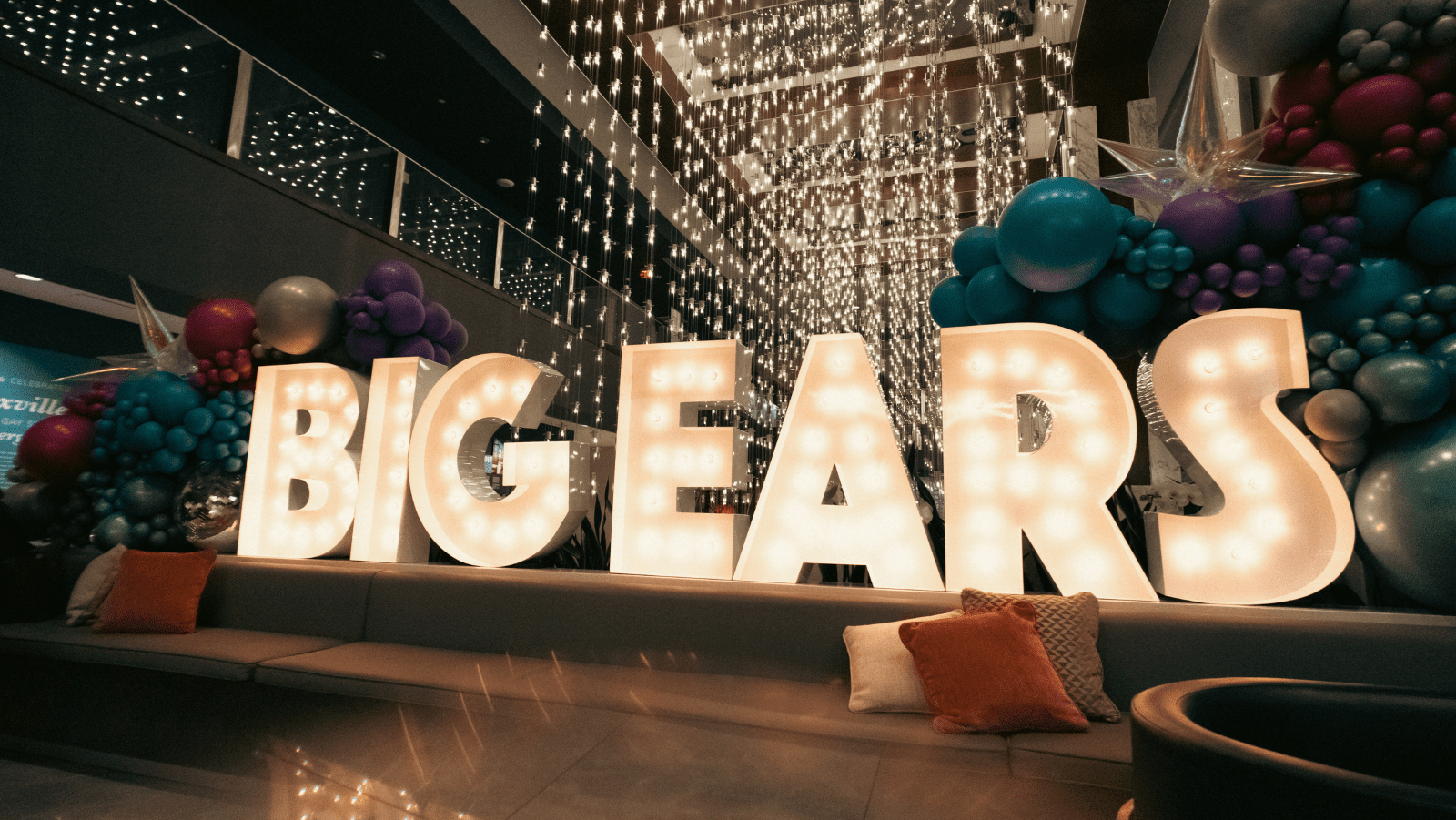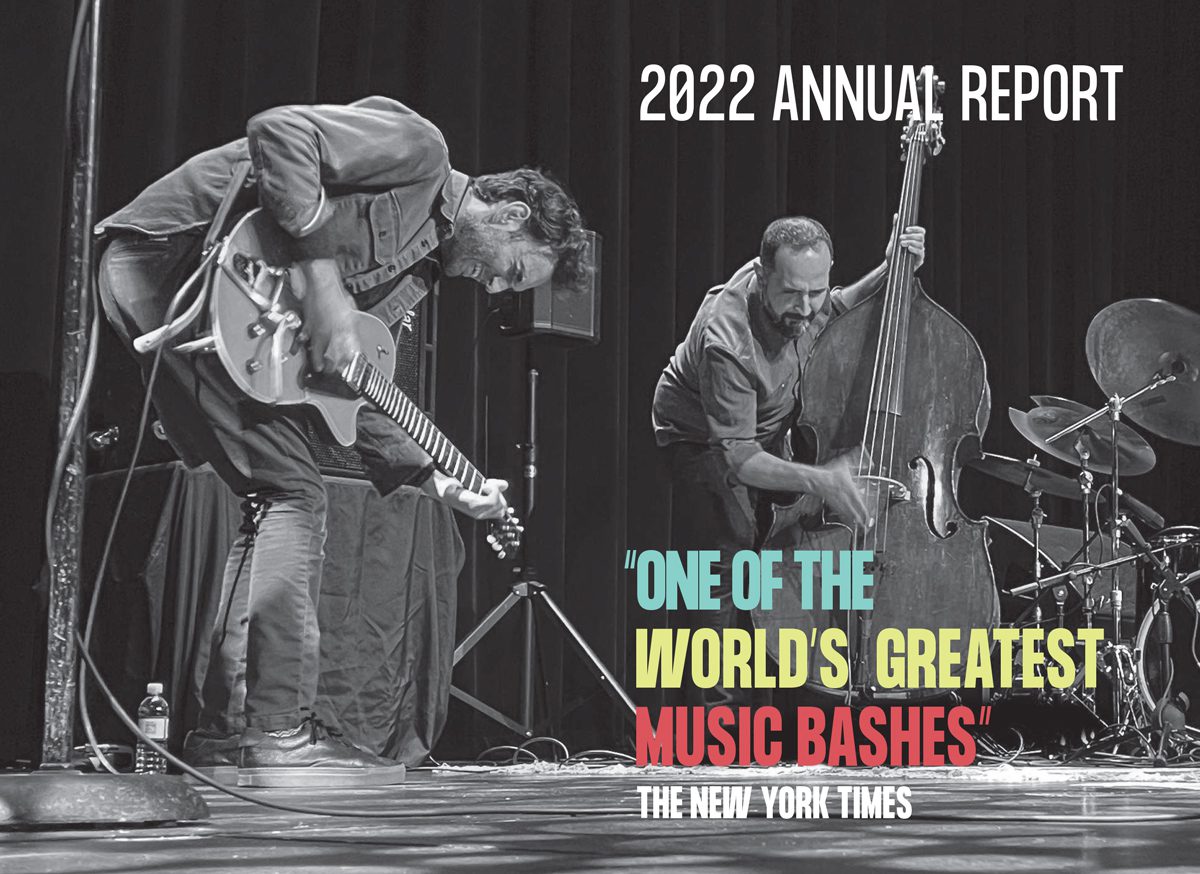Decoding (This Is Not) This Heat
This Heat were aptly named: The Brixton trio existed in a white-hot flash of only five years, doggedly rehearsing and recording in an old meat locked they cutely dubbed “Cold Storage.” But the two albums and handful of EPs and live recordings they made during that span became a hugely important impetus for the rise of post-punk, post-rock, and even the warped alien tones of IDM.
In 2016, the two surviving members reunited with a fresh crew of collaborators as This Is Not This Heat, an equally wild band that uses those early songs as invitations to improvise. In a very rare stateside appearance, they play Big Ears 2019, one of only a few dozen shows since that return.
Here, we attempt to demystify a band that may seem inaccessible or mysterious through some recommendations of their most immediate tunes and most inspiring ideas.
If you shuffle over to Spotify or Apple Music, you might be confused about exactly how small This Heat’s discography is—Spotify has just one tune, while Apple Music adds a live compendium. But Bandcamp has you covered, with both studio albums, the aforementioned live record, two EPs, and the absolutely essential Peel Sessions. In fact, if you want to understand This Heat’s strange mix of power and ponderousness, there may be no better route than Made Available: The Peel Sessions, which delivers a punch that This Heat never found in their meat locker-turned-rehearsal space, Cold Storage, but doesn’t forsake their wonderful sense of imagination and wonder. Start there, and if you love it, heads-up: They’re running a Bandcamp-only special with their 2006 box set, Out of Cold Storage, which captures it all.
On the Future of The Past: An Interview with Irish Times
At the start of 2018, in advance of a This Is Not This Heat show in Dublin, Irish Times writer John Fleming dug deeply but briefly into the band’s place in music’s evolution—concurrent or even before punk, and “the missing link between prog/kraut rock and post-punk”—and the factors that led to their idiosyncratic sound. Fleming touches on a crucial but overlooked theme in This Heat’s aesthetic—their flirtations with the cutting-edge of technology in the late 1970s, and its somewhat human margin of error. That goes especially for the odd keyboard the band used: 14 notes to an octave, no less.

The Quietus on the Still-Timely Politics of Deceit
The gulf between This Heat’s two studio albums is major. Largely instrumental and discursive, their self-titled debut seems tentacular, always reaching for some new item or obsession. But their second album and (for many) masterpiece is disconcertingly direct in its pursuit of sociopolitical critique, as it lampoons generational apathy, the seeming inevitability of a new world war, and the failures of necessary cross-cultural communication. It frames a damning tableau of a world gone mad—and spinning deeper into madness, oblivious to its own descent. John Calvert explores these ideas in a sweeping essay that not only grounds This Heat in a budding improvisational ethic but also links the band to the paranoia of Liars or Radiohead. “Sickened and angry with the idiocy of governing men, they used their prog-honed skill for expressionist nuance to paint this lunatic system of miscommunication in crystal technicolor,” Calvert writes. “What we get is a blaring farce where reason and intellect are lost in translation over a ‘festering tongue.’”
The Ideals of Influences: An Interview with Fact Mag
Prompted by the then-recent reissue of the band’s albums by the Light in the Attic label and their impending live debut as This Is Not This Heat, Robert Ham speaks to Charles Hayward and Charles Bullen about their past, present, and future. The pair candidly speaks about the attitudes that made them different from their peers, musically and politically, and why those rebellious philosophies mean that their shows this decade don’t land squarely as nostalgia-rooted “reunions.” We love this bit from Hayward, about looking backward for the keys to aim ahead: “It was all about trying to find something new. That’s what it said on the instruction manual when we got into The Who or Sgt. Pepper or Albert Ayler. ‘Be yourself. Find your own thing. Work at it.’ What I’m seeing now is an awful lot of people just following things.”
After Playing Brooklyn, July 2018
In 1978, This Heat released their self-titled debut. No one might have guessed that, exactly 40 years later, the band would be on the other side of the Atlantic as a sextet (twice as big as the original band), playing these songs for enthusiastic crowds at one of the summer’s biggest music festivals and at one of New York’s coolest clubs. But that’s where This Heat—or This Is Not This Heat, namely—found themselves last summer, revisiting the highlights of their catalog with the same exploratory vim that made them revolutionary and still makes them relevant. “This Is Not This Heat are still playing with fire,” Arielle Gordon wrote after that New York show, “here with an audience to match.”




